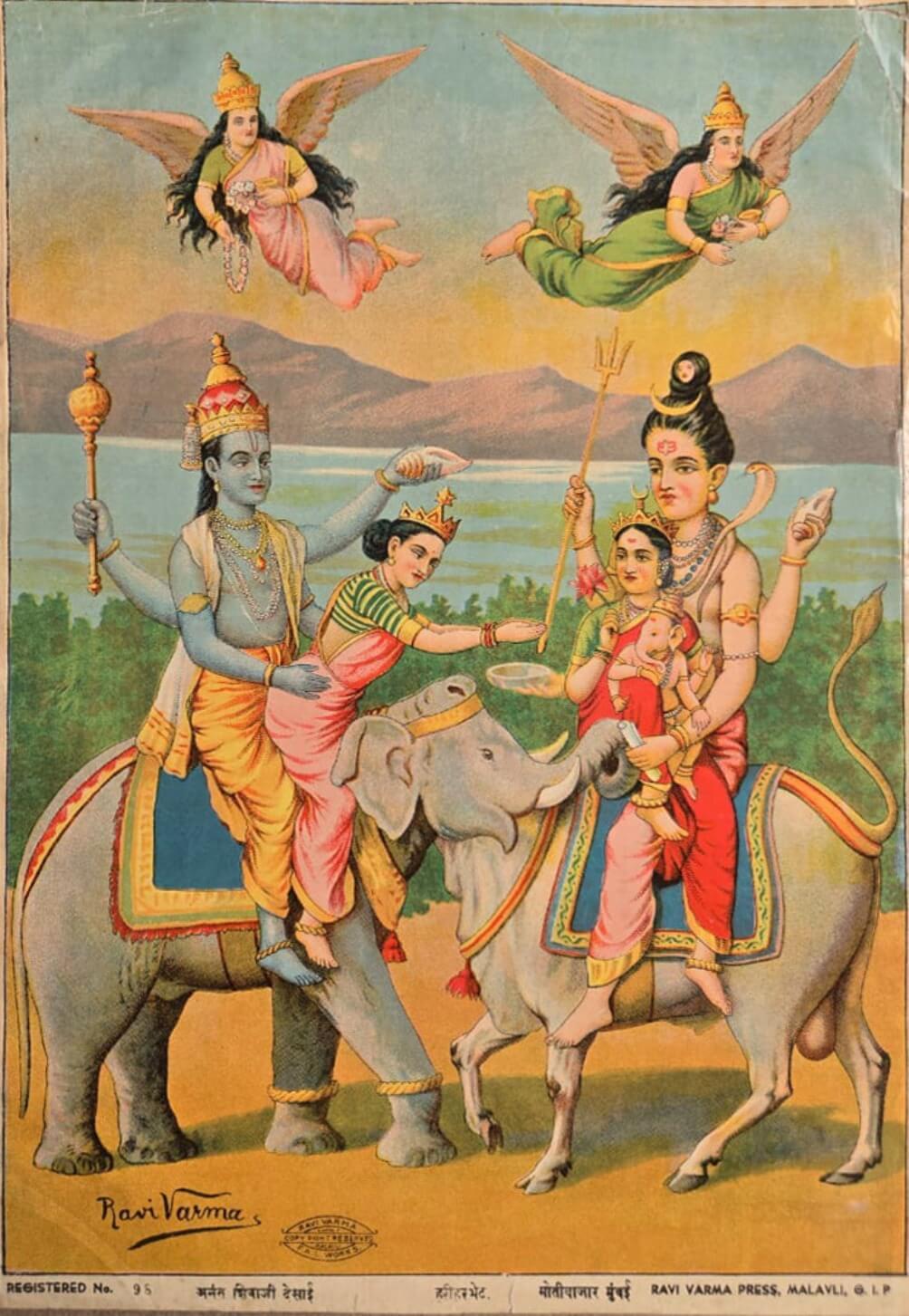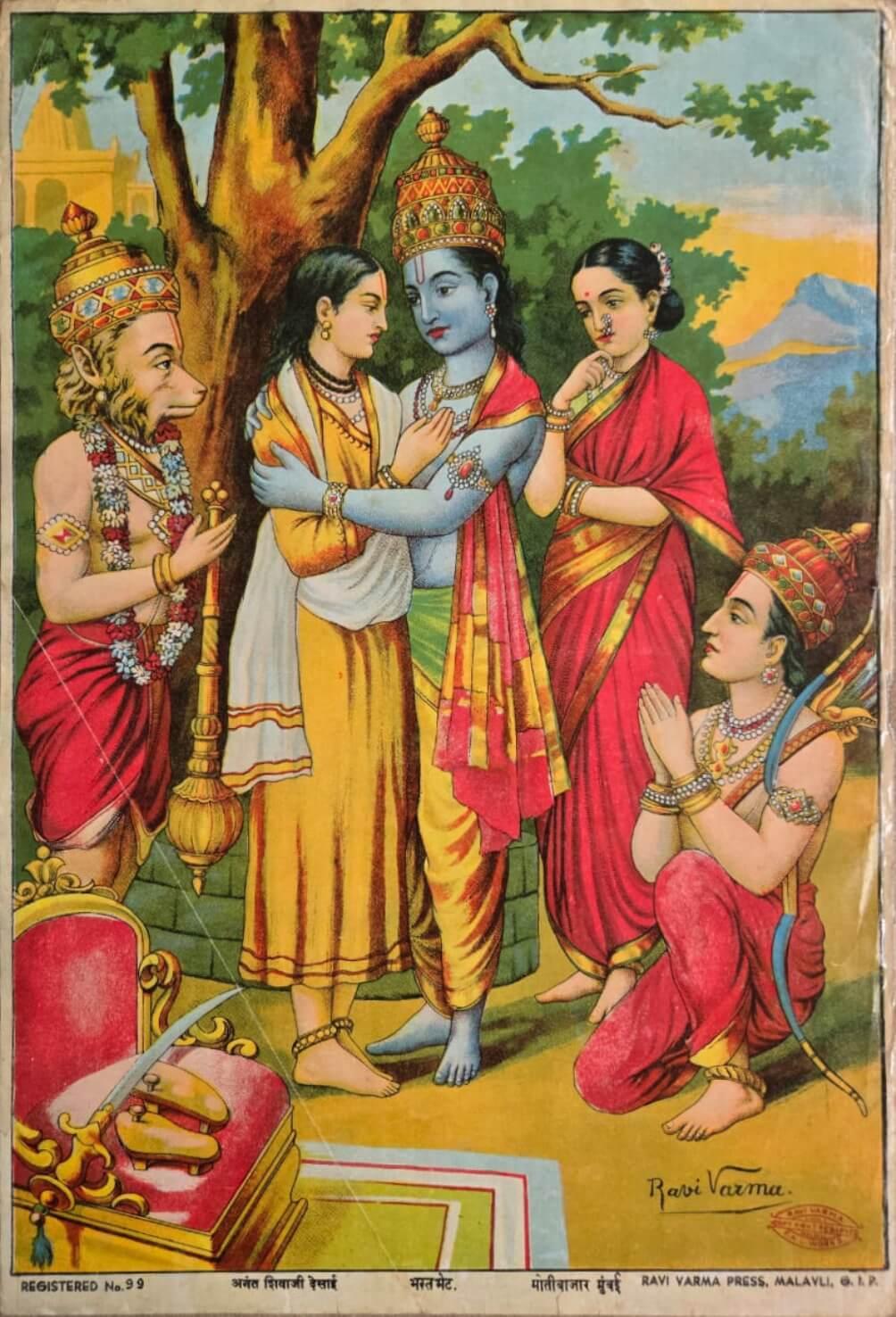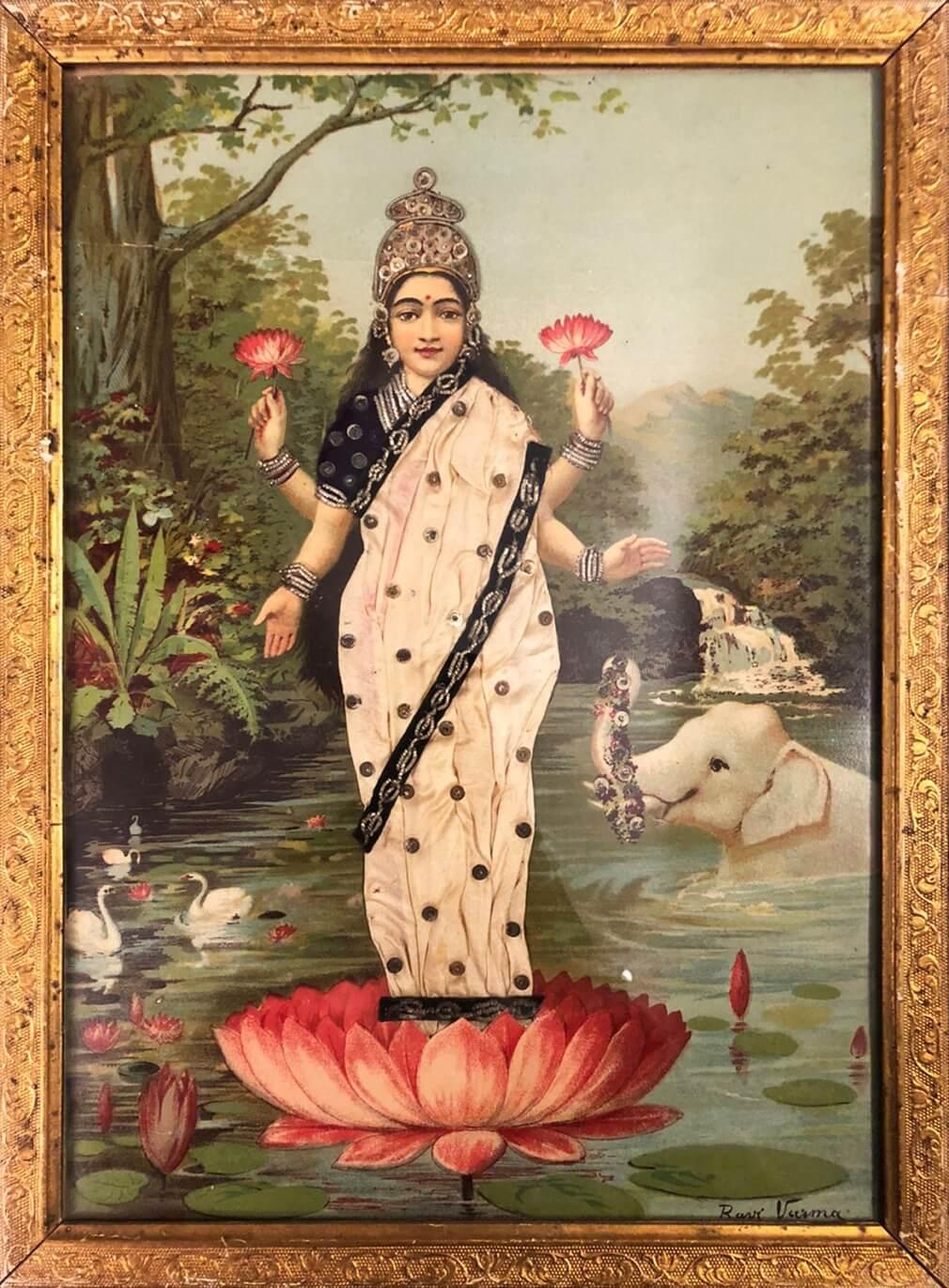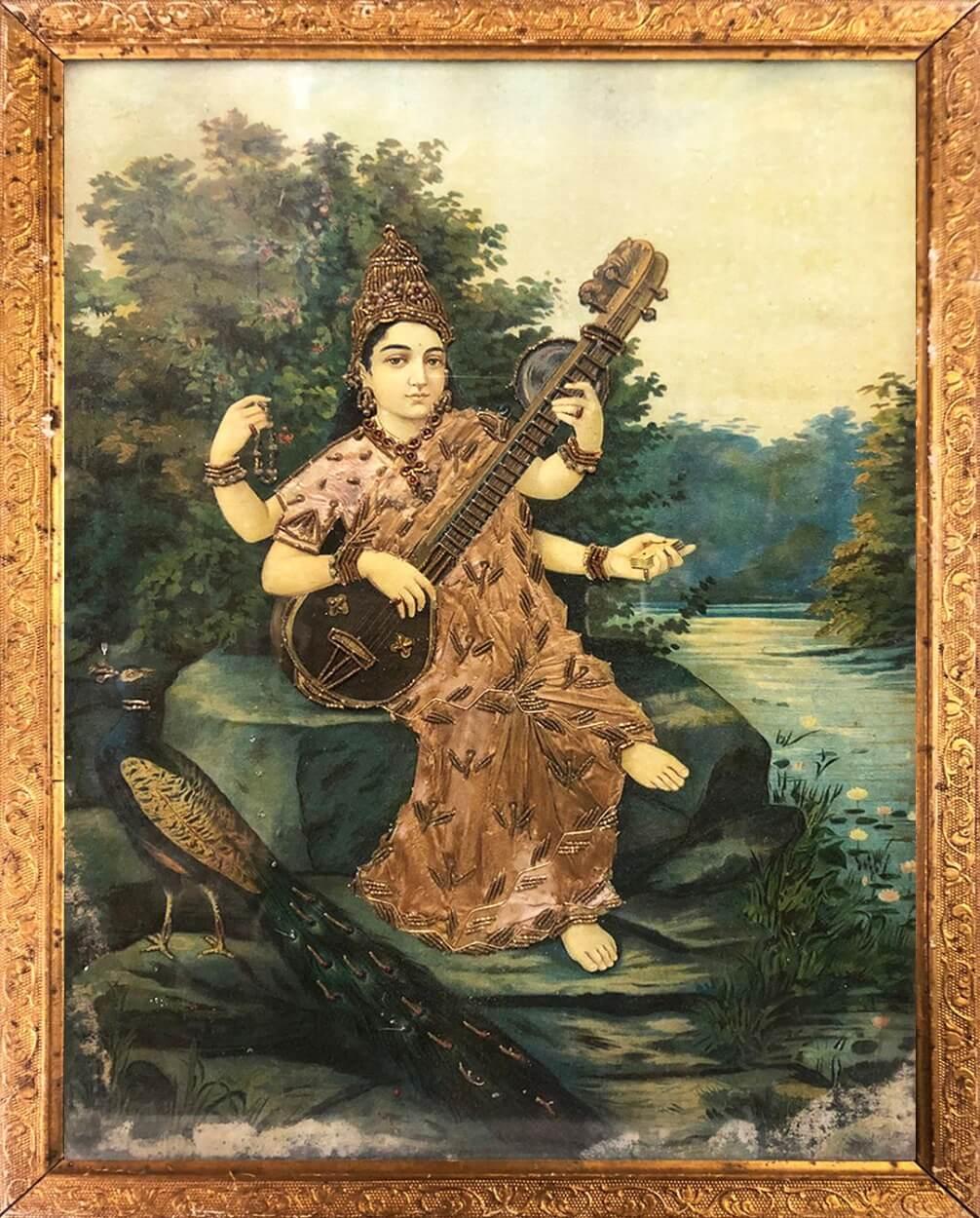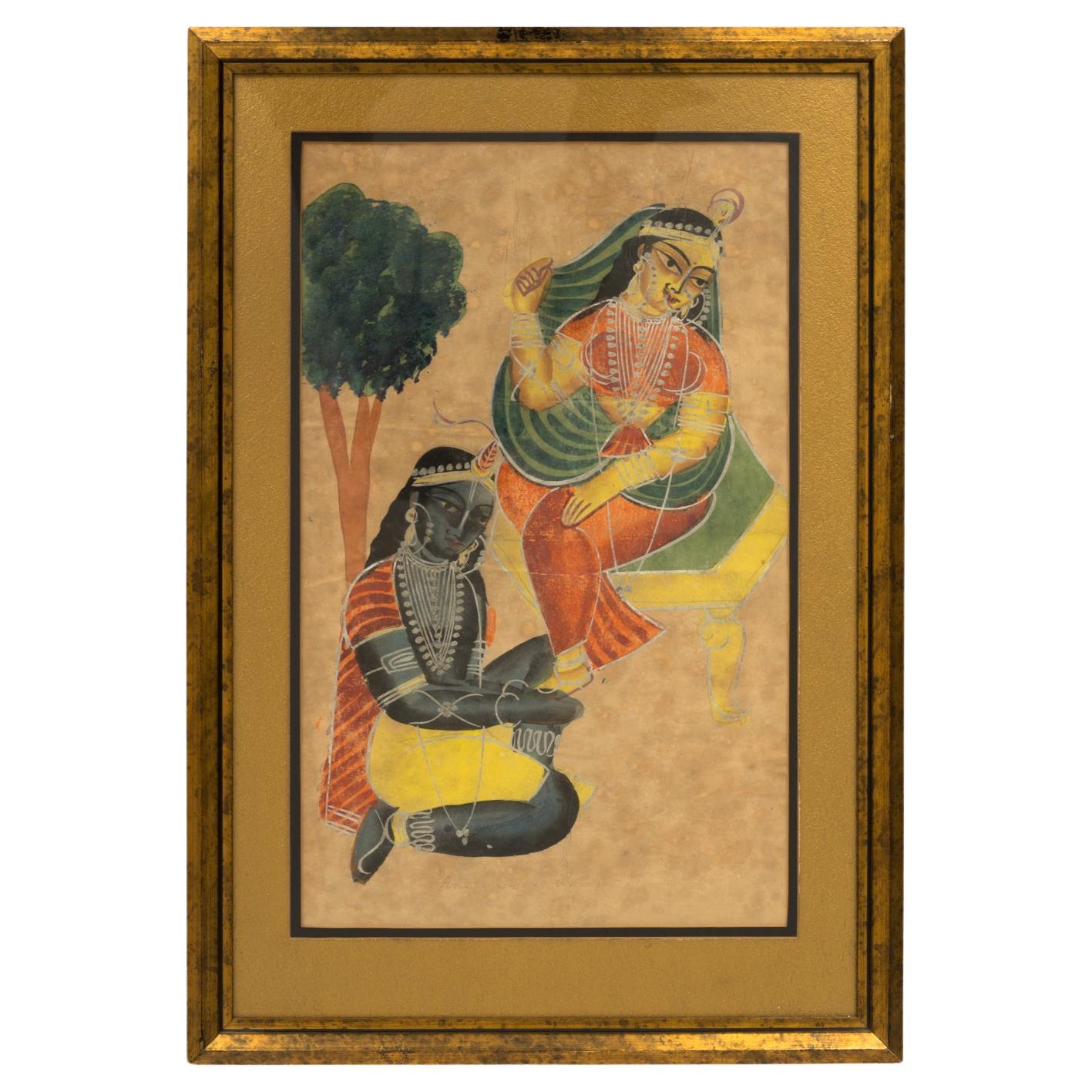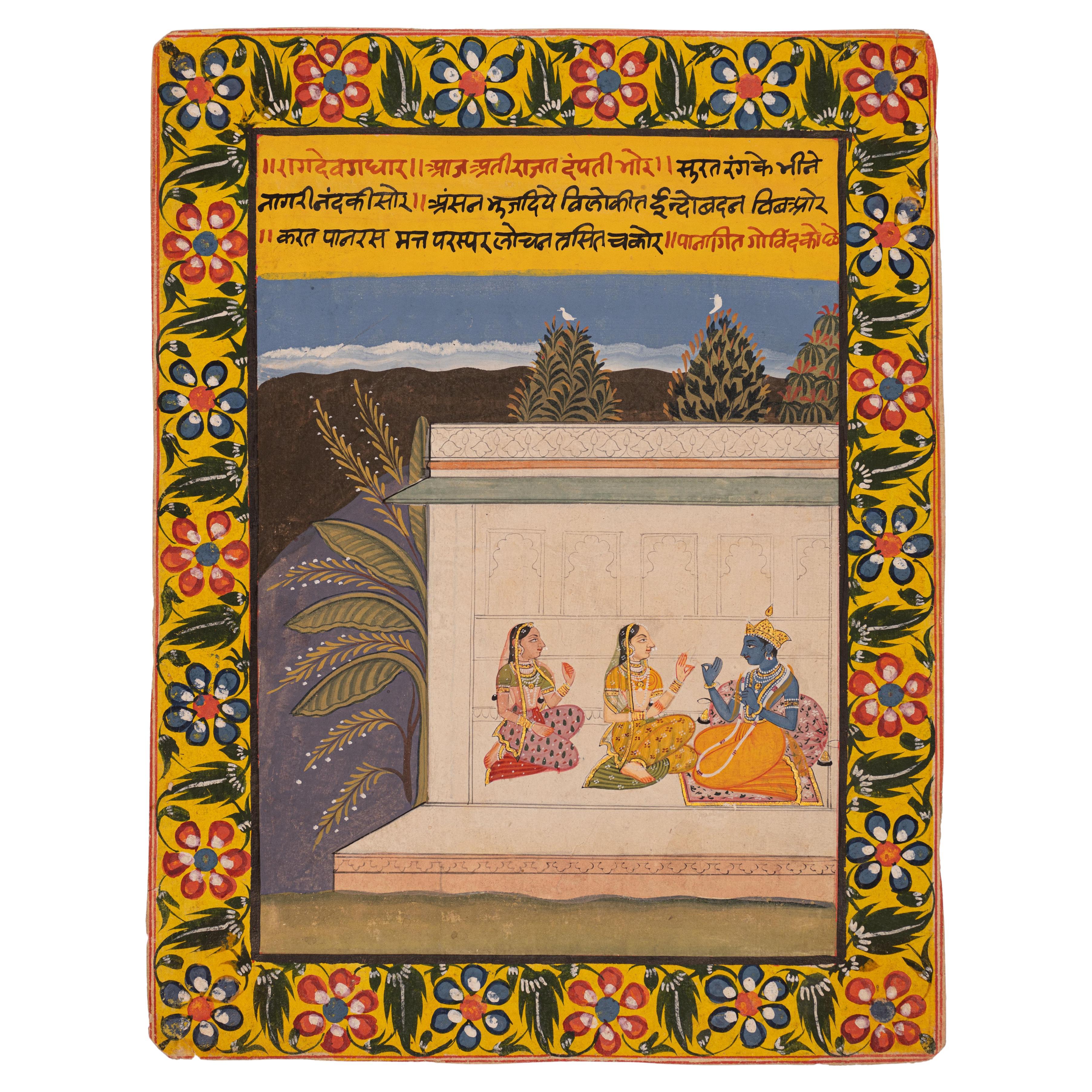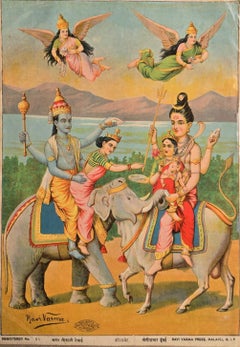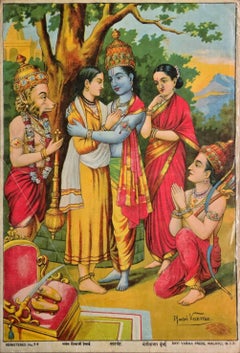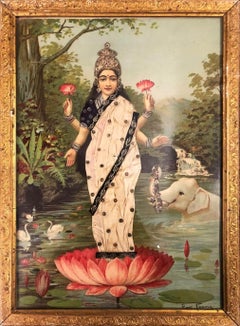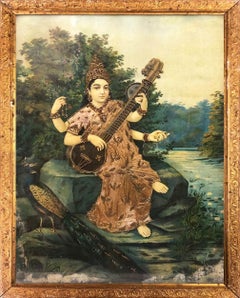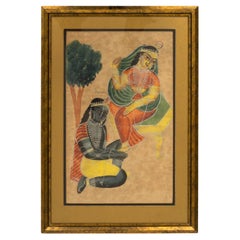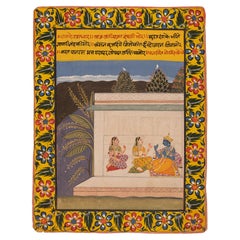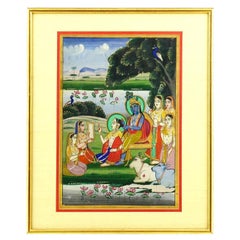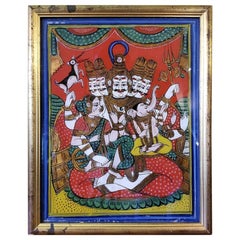Items Similar to Untitled, Krishna complaining to Yashoda, Figurative by Raja Ravi Verma-In Stock
Want more images or videos?
Request additional images or videos from the seller
1 of 5
Raja Ravi VarmaUntitled, Krishna complaining to Yashoda, Figurative by Raja Ravi Verma-In StockCirca
Circa
$910
£694.29
€793.96
CA$1,282.38
A$1,398.30
CHF 742.07
MX$16,905.03
NOK 9,391.37
SEK 8,608.50
DKK 5,930.04
About the Item
Raja Ravi Varma - Laxmi, 14.5 x 10.1 inches
Oleograph, Circa
(Framed & Delivered)
Raja Ravi Varma (29 April 1848 – 2 October 1906) was an Indian painter and artist. He is considered among the greatest painters in the history of Indian art. His works are one of the best examples of the fusion of European academic art with a purely Indian sensibility and iconography. Specially, he was notable for making affordable lithographs of his paintings available to the public, which greatly enhanced his reach and influence as a painter and public figure. His lithographs increased the involvement of common people with fine arts and defined artistic tastes among common people. Furthermore, his religious depictions of Hindu deities and works from Indian epic poetry and Puranas have received profound acclaim. He was part of the royal family of erstwhile Parappanad, Malappuram district.
Raja Ravi Varma was closely related to the royal family of Travancore of present-day Kerala state in India. Later in his life, two of his granddaughters were adopted into the royal family, and their descendants comprise the present royal family of Travancore, including the latest three Maharajas (Balarama Varma III, Marthanda Varma III and Rama Varma VII).
Ravi Varma was the son of Ezhumavil Neelakanthan Bhattatiripad and Umayamba Thampurratti. His mother Uma Ambabayi Thampuratty (or Umayamba Bayi Thampuratty) belonged to the baronial family which ruled the Kilimanoor feudal estate within the kingdom of Travancore. She was a poet and writer of some talent, and her work Parvati Swayamvaram was published by Varma after her death. Ravi Varma's father was a scholar of Sanskrit and Ayurveda and hailed from the Ernakulam district in Kerala. Ravi Varma had two siblings, a sister named Mangala Bayi and a brother named Raja Varma (born 1860). The last-named was also a painter and worked closely with Ravi Varma all his life.
Varma was patronised by Ayilyam Thirunal, the next Maharaja of Travancore and began formal training thereafter. He learned the basics of painting in Madurai. Later, he was trained in water painting by Rama Swami Naidu and rather reluctantly in oil painting by (Dutch or Danish) portraitist Theodore Jenson. The studio used by Varma during his stay at the Laxmi Vilas Palace The British administrator Edgar Thurston was significant in promoting the careers of Varma and his brother. Varma received widespread acclaim after he won an award for an exhibition of his paintings at Vienna in 1873. Varma's paintings were also sent to the World's Columbian Exposition held in Chicago in 1893 and he was awarded three gold medals.] He travelled throughout India in search of subjects. He often modelled Hindu Goddesses on Indian women, whom he considered beautiful. Ravi Varma is particularly noted for his paintings depicting episodes from the story of Dushyanta and Shakuntala, and Nala and Damayanti, from the Mahabharata. Ravi Varma's representation of mythological characters has become a part of the Indian imagination of the epics. He is often criticized for being too showy and sentimental in his style but his work remains very popular in India. Many of his fabulous paintings are housed at Laxmi Vilas Palace, Vadodara.
Raja Ravi Varma was closely related to the royal family of Travancore of present-day Kerala state in India. Later in his life, two of his granddaughters were adopted into the royal family, and their descendants comprise the present royal family of Travancore, including the latest three Maharajas (Balarama Varma III, Marthanda Varma III and Rama Varma VII).
Ravi Varma was the son of Ezhumavil Neelakanthan Bhattatiripad and Umayamba Thampurratti. His mother Uma Ambabayi Thampuratty (or Umayamba Bayi Thampuratty) belonged to the baronial family which ruled the Kilimanoor feudal estate within the kingdom of Travancore. She was a poet and writer of some talent, and her work Parvati Swayamvaram was published by Varma after her death. Ravi Varma's father was a scholar of Sanskrit and Ayurveda and hailed from the Ernakulam district in Kerala. Ravi Varma had two siblings, a sister named Mangala Bayi and a brother named Raja Varma (born 1860). The last-named was also a painter and worked closely with Ravi Varma all his life.
Varma was patronised by Ayilyam Thirunal, the next Maharaja of Travancore and began formal training thereafter. He learned the basics of painting in Madurai. Later, he was trained in water painting by Rama Swami Naidu and rather reluctantly in oil painting by (Dutch or Danish) portraitist Theodore Jenson. The studio used by Varma during his stay at the Laxmi Vilas Palace The British administrator Edgar Thurston was significant in promoting the careers of Varma and his brother. Varma received widespread acclaim after he won an award for an exhibition of his paintings at Vienna in 1873. Varma's paintings were also sent to the World's Columbian Exposition held in Chicago in 1893 and he was awarded three gold medals.] He travelled throughout India in search of subjects. He often modelled Hindu Goddesses on Indian women, whom he considered beautiful. Ravi Varma is particularly noted for his paintings depicting episodes from the story of Dushyanta and Shakuntala, and Nala and Damayanti, from the Mahabharata. Ravi Varma's representation of mythological characters has become a part of the Indian imagination of the epics. He is often criticized for being too showy and sentimental in his style but his work remains very popular in India. Many of his fabulous paintings are housed at Laxmi Vilas Palace, Vadodara.
- Creator:Raja Ravi Varma (1848 - 1906, Indian)
- Creation Year:Circa
- Dimensions:Height: 14.5 in (36.83 cm)Width: 10.1 in (25.66 cm)Depth: 1 in (2.54 cm)
- Medium:
- Movement & Style:
- Period:
- Condition:
- Gallery Location:Kolkata, IN
- Reference Number:1stDibs: LU604316075092
About the Seller
4.9
Vetted Professional Seller
Every seller passes strict standards for authenticity and reliability
Established in 2004
1stDibs seller since 2017
131 sales on 1stDibs
Typical response time: 8 hours
- ShippingRetrieving quote...Shipping from: Kolkata, India
- Return Policy
More From This Seller
View AllUntitled (Vishnu and Lakshmi meeting), Figurative by Raja Ravi Verma "In Stock"
Located in Kolkata, West Bengal
Raja Ravi Varma - Untitled (Vishnu and Lakshmi meeting)
Oleograph
14.5 x 10.1 inches, Circa
(Framed & Delivered)
Raja Ravi Varma (29 April 1848 – 2 October 1906) was an Indian paint...
Category
1890s Modern Figurative Paintings
Materials
Paper, Mixed Media
Untitled (Lord Rama’s reunion), Figurative by Raja Ravi Verma "In Stock"
Located in Kolkata, West Bengal
Raja Ravi Varma - Untitled (Lord Rama’s reunion)
Oleograph
14.5 x 10.1 inches, Circa
( Framed & Delivered )
Raja Ravi Varma (29 April 1848 – 2 October 1906) was an Indian painter an...
Category
1890s Modern Figurative Paintings
Materials
Paper, Mixed Media
Laxmi, Figurative, Mythology by Raja Ravi Verma "In Stock"
Located in Kolkata, West Bengal
Raja Ravi Varma - Laxmi, 19 x 14 inches
Oleograph with embellishments, Circa
(Unframed & Delivered)
Raja Ravi Varma (29 April 1848 – 2 October 1906) was an Indian painter and artist...
Category
1890s Modern Figurative Paintings
Materials
Paper, Mixed Media
Saraswati, Figurative, Mythology by Raja Ravi Verma "In Stock"
Located in Kolkata, West Bengal
Raja Ravi Varma - Laxmi, 19 x 14 inches
Oleograph with embellishments, Circa
(Unframed & Delivered)
Raja Ravi Varma (29 April 1848 – 2 October 1906) was an Indian painter and artist...
Category
1890s Modern Figurative Paintings
Materials
Paper, Mixed Media
Radha Krishna, Figurative, Oil on Canvas by Modern Indian Artist "In Stock"
By Anita Roy Chowdhury
Located in Kolkata, West Bengal
Anita Roy Chowdhury - Radha Krishna
Oil on Canvas
30 x 36 inches
(Rolled & Delivered)
This painting beautifully captures the divine union of Radha and Krishna, rendered in a gentle,...
Category
Early 2000s Modern Figurative Paintings
Materials
Canvas, Oil
Bohurupee, Shiva & Parvati, Oil & Acrylic Painting, Red, Blue, Orange "In Stock"
By Bijan Choudhury
Located in Kolkata, West Bengal
Bijan Choudhury - Untitled - 36 x 42 inches (unframed size)
Oil and Acrylic on Canvas
Inclusive of shipment in roll form.
Style : The Marxist orientation did not allow Bijan Chowdhu...
Category
Early 2000s Modern Figurative Paintings
Materials
Canvas, Oil, Acrylic
You May Also Like
Antique 19th Century Indian Kalighat Painting of Krishna Adoring Radha
Located in New York, NY
Antique 19th Century Indian Kalighat painting of the God Krishna worshipping his divine consort Radha.
Painted in Calcutta, Bengal, India by a Bengali patua, with natural mineral pigment paints on paper.
Signed illegibly in pencil, lower right.
Origins of Kalighat painting written by the Victoria and Albert Museum in London, England:
According to legend, Lord Shiva, the god of dance and destruction, was deep in meditation on Mount Kailash when he received news of the death of his consort, Sati, an avatar (or human manifestation) of the goddess Kali. He wandered for days with her body draped across his shoulders and his inconsolable grief threatened to ruin the earth. Lord Vishnu, the Preserver, was called upon to intervene. To relieve Shiva's burden, he shattered Sati's body into 51 pieces. The little toe of Sati's right foot was said to have fallen at the site of the Hooghly River...
Category
Antique Late 19th Century Indian Folk Art Paintings
Materials
Paper
Antique Indian Miniature Painting of Krishna Conversing with Radha in a Pavilion
Located in San Francisco, CA
Another charming painting of Lord Krishna and his paramour Radha along with her consort seated in an elaborate pavilion while having a gestured conversation. The interior setting is...
Category
Early 20th Century Indian Paintings and Screens
Materials
Paper
Antique Indian Krishna Mixed Media Miniature Painting
Located in Long Island City, NY
An antique Indian Mughal Art mixed media, gouache and gold leaf, miniature painting. The artwork depicts a garden scene with Krishna combing Radhas hair surrounded by the Gopis. Fram...
Category
Antique 19th Century Unknown Paintings
Materials
Paint
Reverse Glass Painting of Shiva, Parvati and Ganesh from the Pal Collection
Located in Dallas, TX
PRESENTING a STUNNING and HIGHLY DESIRABLE and IMPORTANT 19C Reverse Glass Painting of Shiva, Parvati and Ganesh from the Pal Collection.
This piece has impeccable Provenance!
It was purchased by a Private Dallas Collector at Christie’s New York Auction on 20th March 2008. Sale Number 2112, Lot No. 290.
Christie’s operate a twice yearly auction of Southeast Asian Art & Antiquities in New York in the months of March and September.
This sale was titled “The Scholar’s Vision: The Pal Family Collection”.
The painting was described as “A reverse glass painting of Shiva, Parvati and Ganesh – India, Maharashtra, 19th Century.
The holy family seated on the floor, mother and child in the lap of Shiva, with a red background and blue borders. Opaque pigments and metal leaf on glass. 12 x 16 in. (30.4 x 40.6 cm.)
Exhibited:
Durga: Avenging Goddess, Nurturing Mother, Norton Simon Museum of Art, 7 October 2005 – 27 March 2006″.
It carried an Auction estimate of USD 2,500 to USD 3,500 and Sold for USD 2,500 (not including Buyers Premium).
Allowing for inflation alone this would be over $4,300 in today’s value. At highest estimate, this would equate to over $6k in today’s value.
As an added bonus and proof of authenticity the painting still retains it’s original Christie’s Lot No. Label.
It has substantially increased in value over the years as a RARE piece from the ‘renowned’ Pal Family Collection and a RARE piece of antique Asian Indian...
Category
Antique Mid-19th Century Indian Anglo-Indian Paintings and Screens
Materials
Glass
Large Antique Anglo-Indian Painting on Woven Fabric Portraying A Female Dancer
Located in Hamilton, Ontario
This very large and well executed painting on a woven fabric is unsigned and likely done by a European artist in the late 19th century or early 20th century. The painting is done in ...
Category
Antique Late 19th Century English Anglo-Indian Paintings
Materials
Fabric
$2,500 Sale Price
57% Off
Indian Miniature watercolour on paper Mid 20th c fine detail playful Krishna
Located in Norfolk, GB
Indian miniature showing Krishna, cows and the gopis (girls)
Watercolour on paper, c mid 20th century
Size Mounted: 33 x 22 cm
Image Size: 24.2 x 13.4 cm
Signed bottom right with a...
Category
Mid-20th Century Other Art Style Figurative Drawings and Watercolors
Materials
Paper, Watercolor
More Ways To Browse
Krishna Antique
Kerala India
Kerala Antique
Krishna Painting
Antique Oleograph
The Card Players
Vintage Christmas Illustrations
Zack Zdrale
1600 Oil Paint
19th Century Painting Girl With Dog
50 X 60 Painting
A J Milne
Antonio Mancini
Batman Painting
Bikash Bhattacharya
Brown And Bigelow
Collins Texas
Cuban Surrealist Paintings
